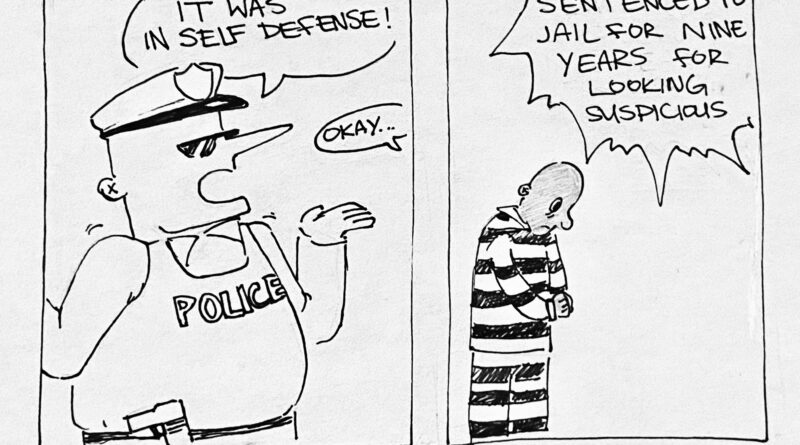Communities must be protected from police violence
During the height of the Black Lives Matter (BLM) movement, as images and discourse were being rapidly exchanged around the murder of George Floyd and a majority of people were watching calls for police reform take place in unprecedented numbers thanks to social media, cities promised to pass policies reforming the historical power of police. Three years later, the issue of police brutality persists. The Olympian looked at the impacts and changes–or lack thereof–of policy interventions, in the wake of Tyre Nichols’ murder.
For example, a federal policy that didn’t pass is the George Floyd Justice in Policing Act, which aimed to ban asphyxiation and excessive use of force as well as limit how hard it is to convict police. It’s passed in the House of Representatives twice, but not the Senate. After Tyre Nichols’ murder, there is a new addition to the bill; the Tyre Nichols Duty to Intervene, which outlines “officers’ responsibility to act when they witness misconduct.”
In 2019, there were 219 fatal police encounters in California, the same year that California passed one of the biggest police reform packages; AB-392: The California Act to Save Lives—by defining deadly force and clarifying that only “objectively reasonable force” is permitted. In 2022 in California, 139 people were killed in police encounters.
Nationwide, 1,192 people were killed by police in 2022–the highest on record since 2013. Only in nine cases were the officers convicted. Most cases begin with non-violent offenses or no suspected crime, “109 people were killed after police responded to reports of someone behaving erratically or having a mental health crisis.” Black people are over three times more likely to be killed by police than white people according to the Brennan Center for Justice.
When something significant happens, like the historical cases of police brutality—abuse of Rodney King, the murder of George Floyd, and more—the public becomes engaged for a short time and pushes for change. Cities and the federal government seem to start reforming law enforcement, but nothing changes.
The Olympian discussed various suggestions, but didn’t come to concrete solutions. As a class, we agreed that policies are not enough to solve the chronic issue of police brutality. With police reform policies that have been enacted, some believe they need to be more strongly enforced, at the very minimum. The way police are trained to act on bias and assumption must also be changed.
To combat the culture around policing, cultural shifts need to happen. This could include more education about the reality of racism in policing and dismantling the view that Black people are inherently violent. Most police encounters are addressing nonviolent or non-crime-related offenses, yet because the people involved have been systematically associated with violence, unnecessary use of violence and weapons by police often occurs.
We also discussed the possibility of diversion from reliance on the police. Oakland Power Project has provided training to support community safety in order to decrease opportunities for police to interact, and thus kill, community members. Numbers like 311 exist to get community support instead of contacting the police. However, we have concerns that, as long as the founding principles of the institution are not changed, all roads lead back to the police involving themselves in issues. Other numbers, like the new suicide hotline–988–still rely on police response, demonstrating this pipeline. Having dedicated mental health services could address the issue, however, it does not eradicate the threat of police violence.
Police brutality has existed since the first form of policing during colonial America, and it still persists today. The policies enacted and ignored have proven to not relieve the issue to an acceptable extent, so The Olympian believes further steps must be taken—perhaps including education to shift mindsets, stronger enforcement of policies, and more reliable diversion from police—to protect communities from ongoing police violence.


I love that this paper has touched on some very important topics, like George Floyd’s death and Rodney King’s beating. As stated above, Black people are more likely to be killed than white people by police. And in most cases, the person is unarmed! I believe that a white cop kills most people of color. This violence can date back to the Aztecs and the Indigenous people when the land that once was the original owners was stolen. The Aztecs and Indigenous were enslaved in their land and had to change their religion.